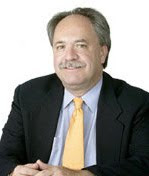 In the recently published From Despair to Hope, Secretary Henry Cisneros recalls his visit to Lexington Terrace in Baltimore, where he and then Mayor Kurt Schmoke were urged by the police not to enter one of the high rise public housing buildings as their safety could not be assured. He was appalled at the thought that a Mayor and the highest-ranking housing official in the nation could not (even with a police escort) safely enter a building that young mothers with their small children were expected call home. This experience brought into focus the urgency of implementing the recently enacted HOPE VI program.
In the recently published From Despair to Hope, Secretary Henry Cisneros recalls his visit to Lexington Terrace in Baltimore, where he and then Mayor Kurt Schmoke were urged by the police not to enter one of the high rise public housing buildings as their safety could not be assured. He was appalled at the thought that a Mayor and the highest-ranking housing official in the nation could not (even with a police escort) safely enter a building that young mothers with their small children were expected call home. This experience brought into focus the urgency of implementing the recently enacted HOPE VI program.
Unfortunately, the situation at Lexington Terrace was not unique either in the city or the nation. Downtown Baltimore was encircled by a ring of high-rise family public housing sites, each with comparable levels of deterioration and despair.
Through more than a decade of hard work and with a huge assist from five HOPE VI grants and over $60 million in special state funds, this aggregation of misery has been replaced with five new mixed-income communities where public housing residents now live in secure, clean, and well-managed homes. In addition, over 2000 former residents have been or will be able to relocate to low-poverty communities of opportunity utilizing a scattered-site development program and Section 8 vouchers with extensive counseling.
HOPE VI brought a critical mass of blight elimination and new community building to spark major economic development in Baltimore. In East Baltimore, a land swap between the Housing Authority Baltimore City and Johns Hopkins related to the Broadway HOPE VI project (featured on page two photo in Cisneros’ book) enabled Hopkins to move forward with over $1 billion worth of investment. This effort has been buttressed by the $1.8 billion mixed-use East Baltimore Development Initiative on 88 acres to the north.
In West Baltimore, the redevelopment of two public housing sites, including the infamous Lexington Terrace, encouraged the University of Maryland to undertake its own BioPark. This was the first major expansion across Martin Luther King Boulevard, which historically demarcated the end of the Central Business District.
Paul Graziano serves as the commissioner of Baltimore Housing. This entry is the first in a two-part series of posts by Comissioner Graziano. You can read his second entry here.

